From severe storms to critical droughts, extreme weather changes caused by climate change are seriously impacting the planet. One upcoming event which has a significant impact on the environment is the fast-spending fuelled event that is Black Friday. Deliveries from Black Friday alone produce 429,000 tonnes of carbon and garden experts Primrose found that you would need to plant seven million trees to offset the effect of the day’s emissions.
Primrose have imagined what five famous gardens could look like in the future as a result of the climate crisis. By using scientific research revealing the extreme weather targeting environments in five different countries, they’ve created interactive graphics to show what could happen to the world’s most sacred gardens if we don’t act.
1. Pattaya’s Nong Nooch Tropical Garden: Damaged by pollution


The development of Pattaya’s Tropical Gardens has been incompatible with the coastal environment and climate change patterns, says the Head of Department of Development and Sustainability.
Tourist development is labelled as the main driver of environmental changes and makes the Nong Nooch gardens vulnerable to climate change risks, including water scarcity and pollution.
Primrose predicts that without access to water, greenery in Pattaya’s famous Nong Nooch Tropical Garden would soon wilt and die. Air pollution would also visibly damagethe garden’s iconic palmsand cycads, stunting their growth and causing them to turn mottled and yellow
2. Edinburgh’s Royal Botanic Gardens: Greenhouses smashed in extreme storms
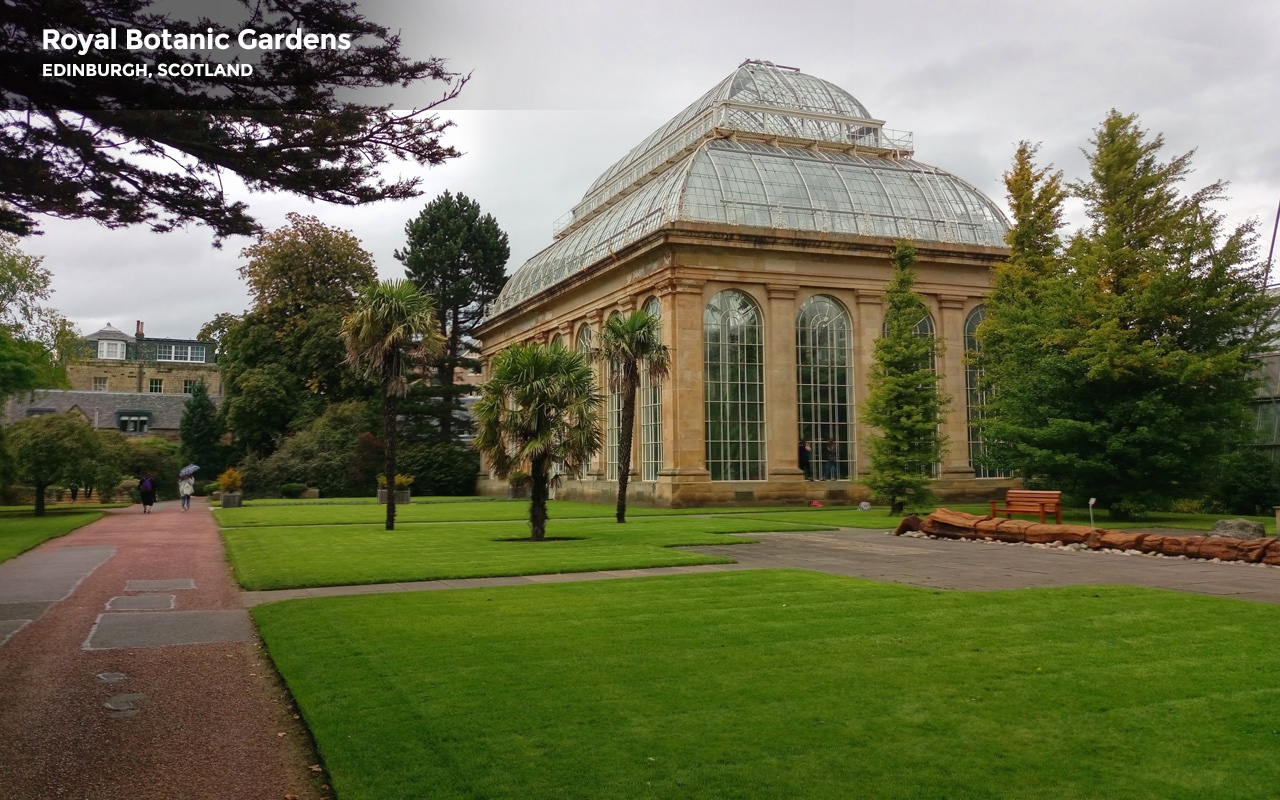

Climate Projections for Scotland and the UK suggest winters will be milder and wetter, however we may experience more heavy downpours of rain and more extreme stormy weather.
Suzanne Martin, Climate Change Policy Officer explains, ‘In 2012, the persistent heavy rain brought flooding and damage to beds, lawns and paths at the Royal Botanic Garden Edinburgh (RGBE).’
She states that waterlogging of lawns made grass cutting difficult and caused soil compaction, with adecrease in flowering plants and an increase in vegetative growth. The severe gale forces of extreme storms can damage the panes of glass in the glasshouses, just as 600 panes were back in the stormsof 2012.
Primrose imagined how, if these extreme storms continued, this could affect the RGBE once again. The beautifully maintained lawns would be overgrown, flowering plants would die and the plantsfrom the warmer climes of South East Asia kept in the glasshouses would die after just 24 hours of being exposed to the cold.
3. Paris Claude Monet’s Garden: Dried out from extreme heatwaves
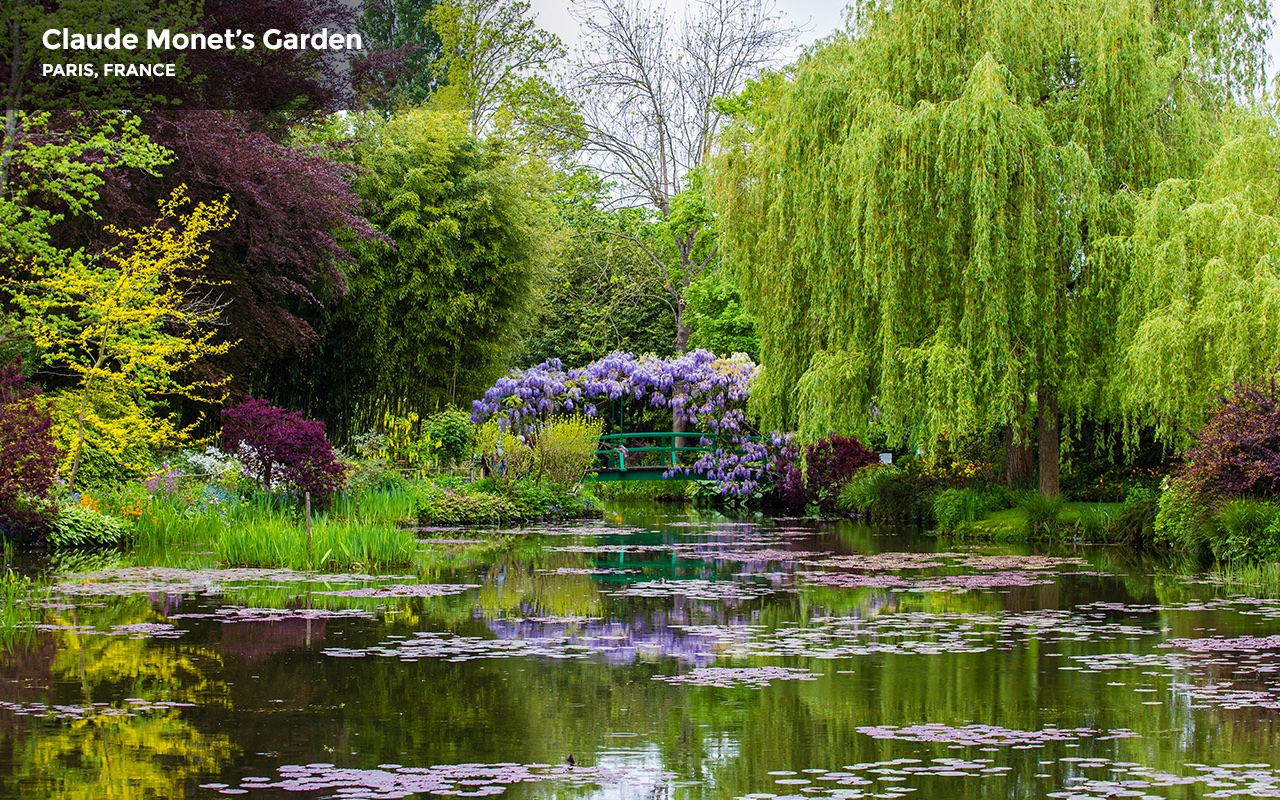
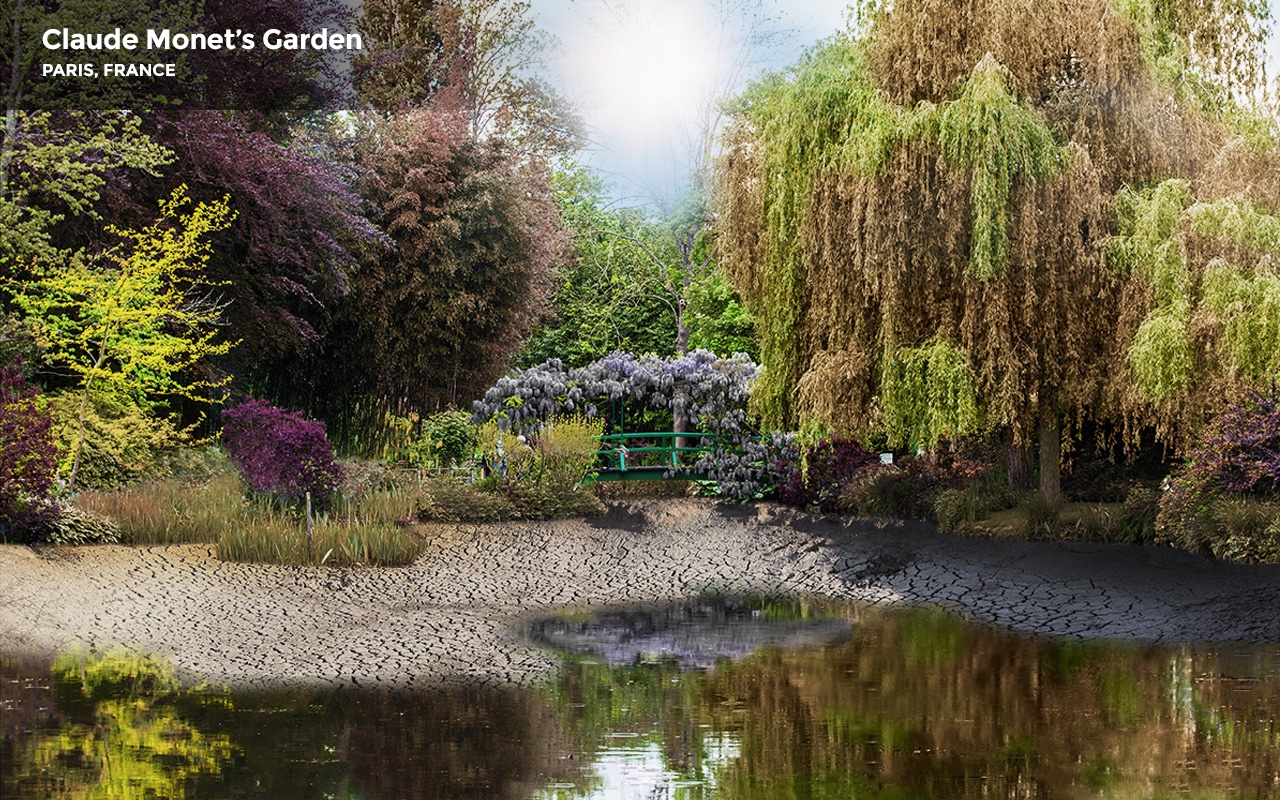
With extreme rising temperatures tackling mainland France, the recent record-breaking heatwaves are expected to increase further as the climate crisis continues. According to Climate Change Post, global warming in mainland France is 30% greater than the average warming throughout the globe. The average temperature has risen by 0.95°C, compared to 0.74°C globally.
Primrose found that climate change could seriously affect plant life in France, as heat stress dramatically reduces the growth of plants and causes irreversible damage to their growth anddevelopment. Claude Monet described his garden as his most “beautiful work of art”, but the Impressionist’s favourite plants would quickly lose their bright colours and wither in the extreme heat.
4. Tokyo’s Koishikawa Korakuen gardens: Lost to wildfires
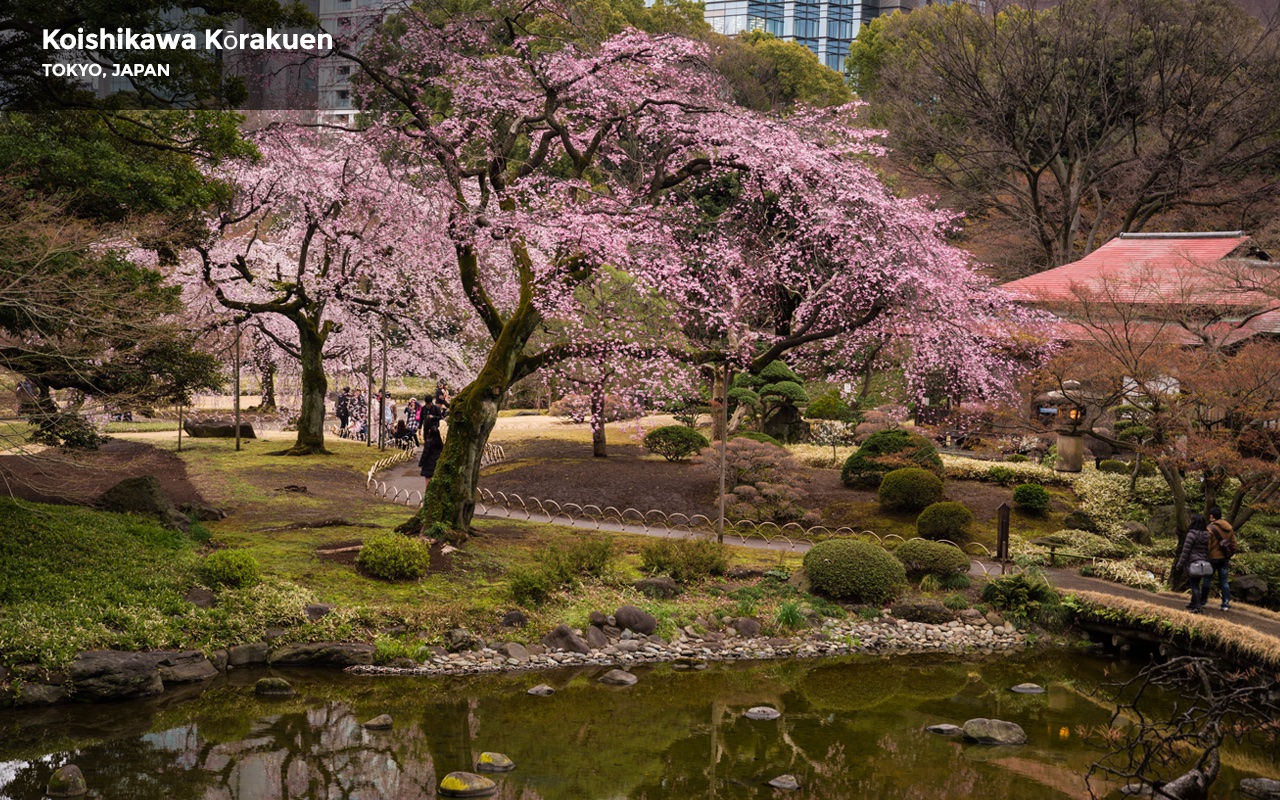
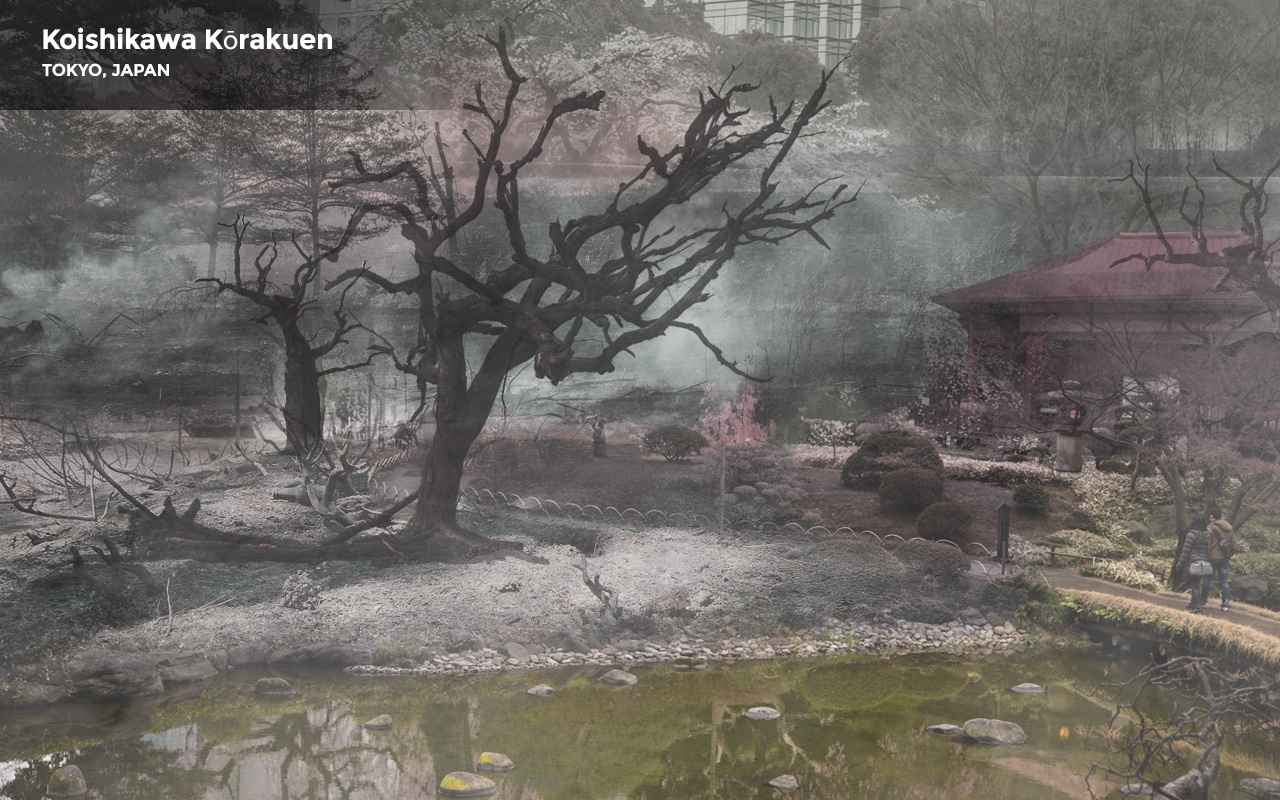
Tokyo is at high risk for wildfires, with a greater than 50% chance of encountering weather that could support a significant wildfire that is likely to result in both life and property loss in any given year.
The Global Facility of Disaster Reduction and Recovery explains further, “projections of future climate identify a likely increase in the frequency in the weather, with climate projections also‘ indicating that there could be an increase in the severity of the fire’.
Primrose visualised how this would affect one of Tokyo’s most famous gardens, the Koishikawa Korakuen. Primrose’s interpretation shows ash blanketing the ground of the garden, swallowing it’s vibrant beauty. Tokyo’s iconic weeping cherry blossom trees wouldn’t survive a wildfire and would take years to restore their former beauty.
5. London’s Kew Gardens: Floral displays drown from flood damage
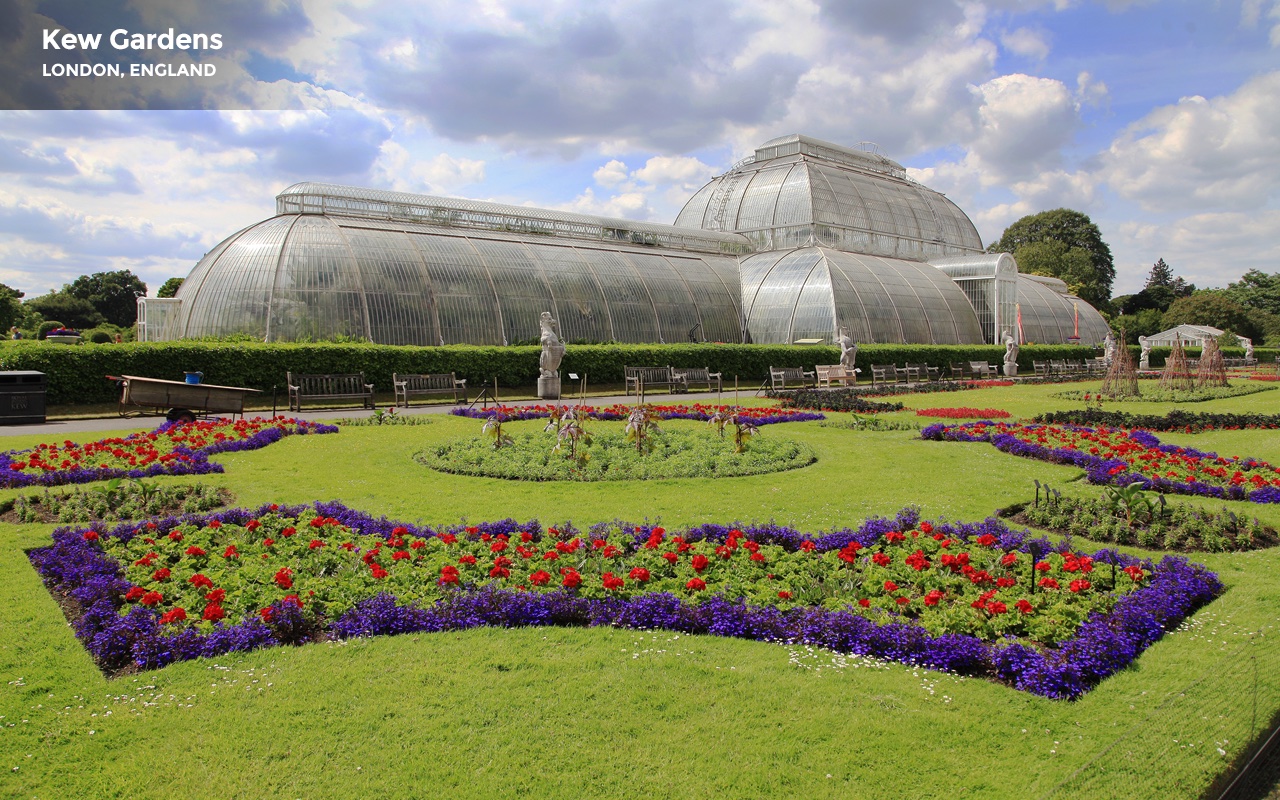
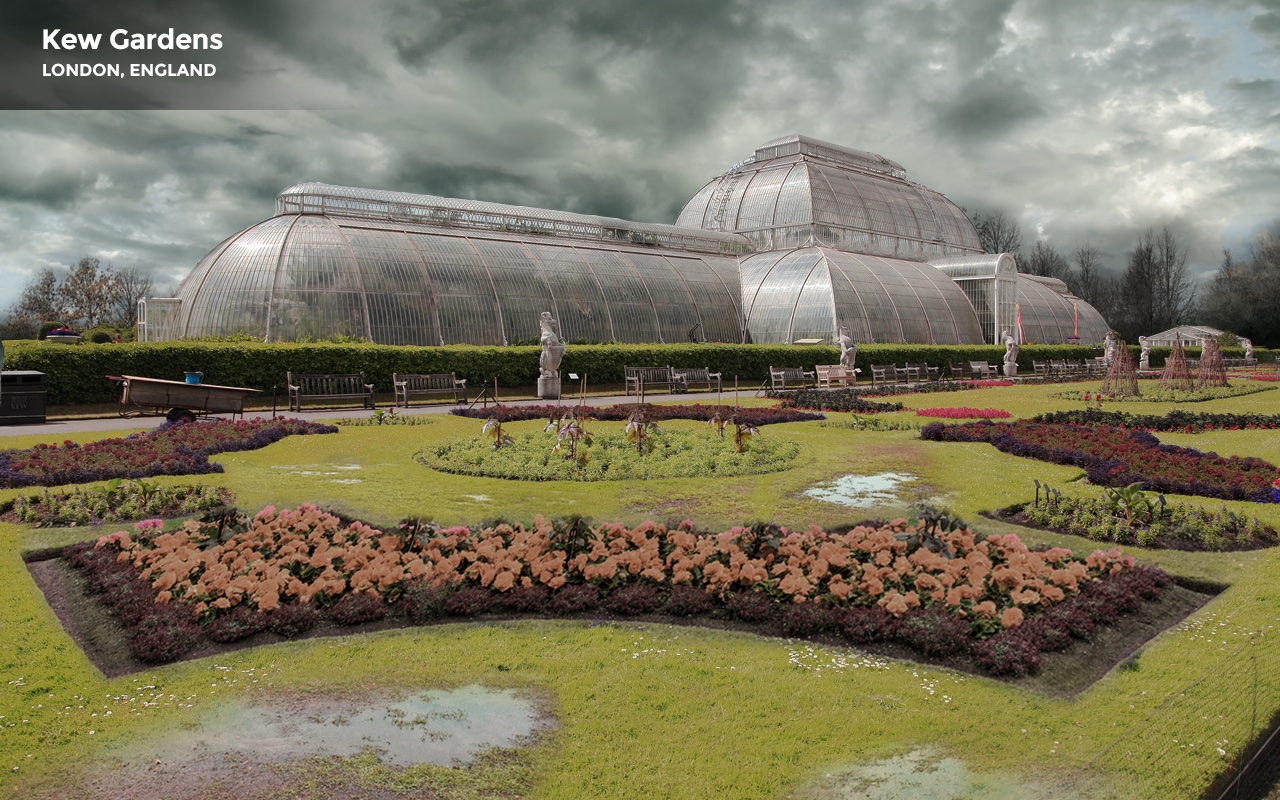
The UK’s very own gardens don’t escape the impact of climate change. A UK Climate Impacts Programme report states that the UK capital is exposed to far greater potential damage from flooding than any other area in the UK–and London likes directly within the flood plain of the River Thames.
Primrose found that one of the gardens at highest risk of flooding is Kew Gardens. They found that most garden plants at Kew would not survive a serious flood, due to limited access to oxygen and lack of nutrients in waterlogged soil. The eye-catching tulips outside Kew’s Palm House are likely towilt and brown, rotting in flooded soil. Many of the 14,000 trees in Kew would also be vulnerable, as well as the daffodil and snowdrop ornamental plants planted throughout the grounds of Kew.

Join the ecogreenlove community
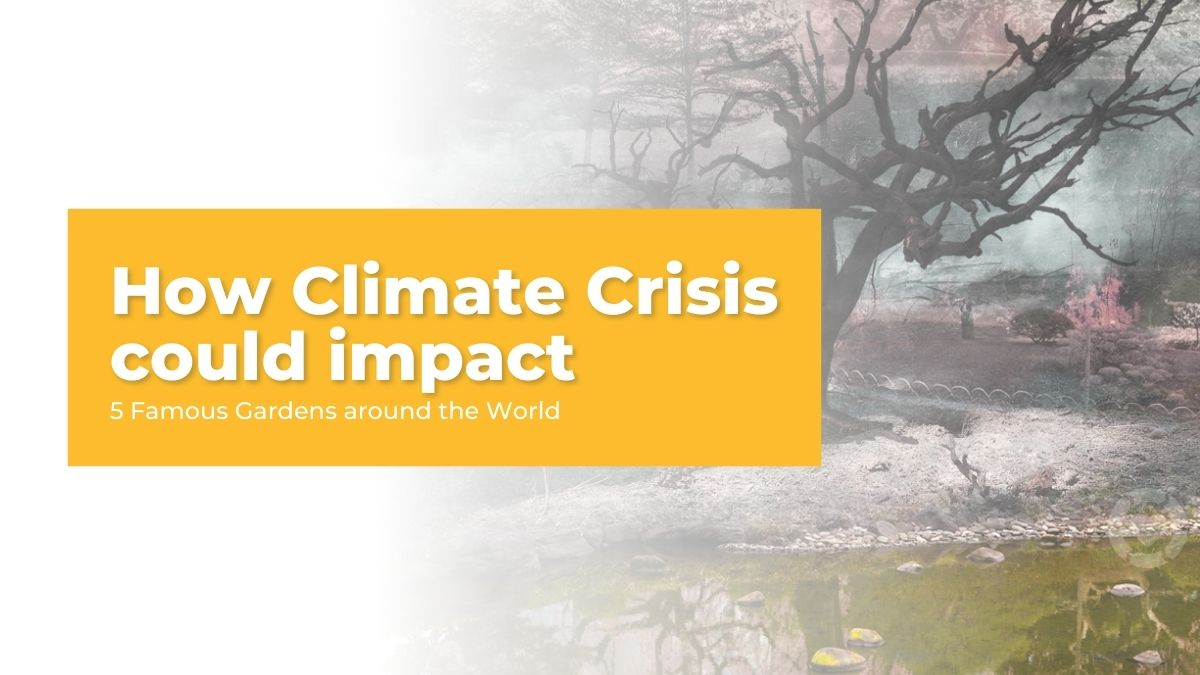
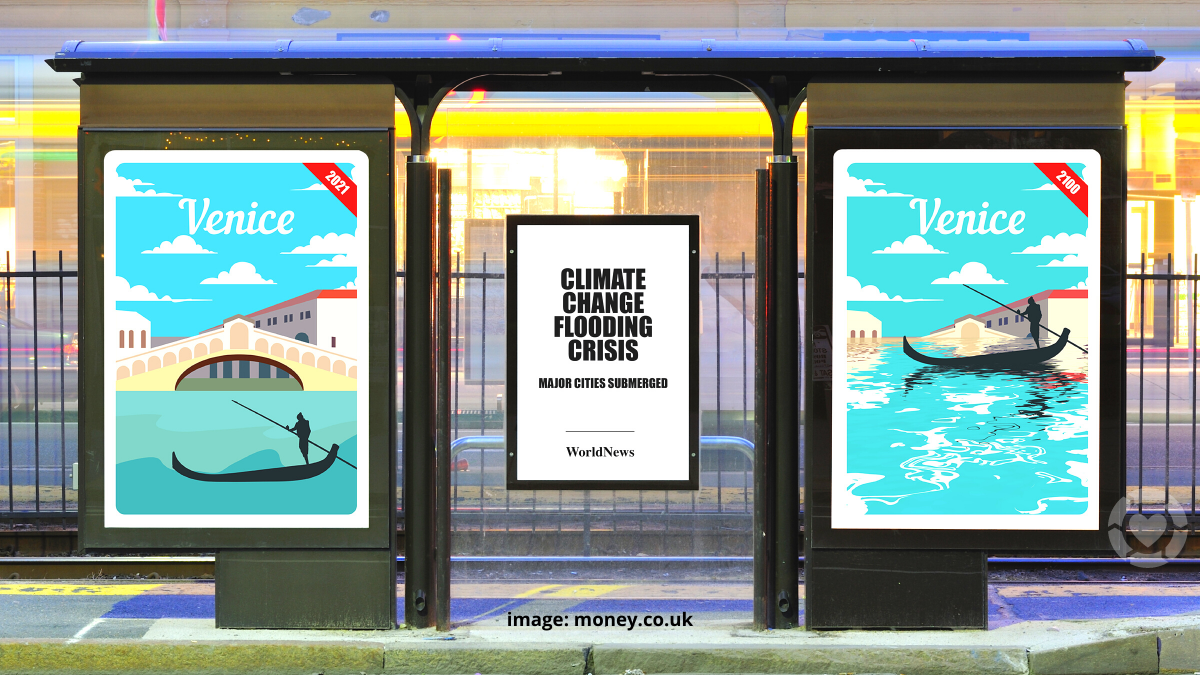
![10 Xeriscaping Ideas for Dry Climates [Visual]](https://ecogreenlove.files.wordpress.com/2021/09/09292021_xeriscaping.jpg?w=1200)
![Can YOU Fix Climate Change? [Video]](https://ecogreenlove.files.wordpress.com/2021/09/09222021_fixclimatechange.jpg?w=1200)
![Gardening for Climate Change [Visual]](https://ecogreenlove.files.wordpress.com/2019/08/08262019_climatechangegardening.jpg?w=888)
